You volunteered for submarines? Are you crazy?
The sacrifices made by American submariners in the Second World War are well documented. 52 boats lost. The Submarine Service represented only 1.6% of all Navy personnel during the war but they accounted for over 55% of all Japanese ships sunk, including one-third of the Imperial Japanese Navy. During World War II, the U.S. Navy’s submarine service suffered the highest casualty percentage of all the American armed forces, losing one in five submariners. Some 16,000 submariners served during the war, of whom 375 officers and 3131 enlisted men were killed.
FLEET ADMIRAL CHESTER W. NIMITZ, U.S. NAVY
FEDERAL OFFICE BUILDING
SAN FRANCISCO 2, CALIFORNIA
We, who survived World War II and were privileged to rejoin our loved ones at home, salute those gallant officers and men of our submarines who lost their lives in that long struggle. We shall never forget that it was our submarines that held the lines against the enemy while our fleets replaced losses and repaired wounds.
C.W. Nimitz, Fleet Admiral, USN.
As a comparison, the Germans lost 765 submarines during the war and the Japanese lost 201 boats. To their credit, they also accounted for a very large amount of damage to their enemy and had an impact on the wars prosecution well beyond their physical sizes.
Yet men continued to volunteer.
Despite this knowledge, men continue to this very day to volunteer to serve on submarines. Some call them the elite of the fleet while others kid them about being bubbleheads. Even in the shadows of the losses of World War 2, volunteers for submarines continued to arrive at the New London Submarine School. In the early 1950’s, the promise of submarines that would travel further and under greater stress once the new atomic power was mastered forced the Navy Medical leadership to examine every aspect of what it took to be a submariner.
Creating the Submariner Stereotype was only one part of the process. Another step taken was creating a Confidential Test that was supposed to add to the picture of what a good submariner would look like.
In the early 1950’s, this test was administered and revised several times to try and give interviewing officers a way to screen out potential candidates for submariner duty. There were three ways a man could be washed out.
The first was academic. The complicated machinery and processes of a submarine and the limited amount of men who could actually serve at any given time on board made it necessary to only accept those who exhibited superior skills. A man had to be able to think quickly, solve complex problems, and suspend his fear while doing so. All of those traits were well documented form the war patrol reports that were meticulously studied and analyzed.
The second qualification was the physical testing. Many men failed simply because they could not adapt to the pressures that submariner life present. The dive tower and the pressure tank weeded out a good percentage of men who were otherwise able to serve but would prove to be a burden if allowed to sail on boat a boat.
Finally, there was the mental component. Long periods in close quarters under the most demanding circumstances would certainly make someone with a personality issue vulnerable to a break down at just the wrong moment. Again, the limit to crew size made it clear that every single man would be needed at any given moment. There are no “riders” in a crew with the possible exception of temporary specialists that only serve certain special functions. And those are damn few.
So the Navy Submarine Medicine developed this confidential assessment that was given as a battery of tests. This was part of the process to screen potential submariners before they could set foot on their very first operational command. I remember being given a few tests when I was going through sub school over 46 years ago but frankly I could not tell you what was on the tests. I remember talking to a shrink too but again, I do not remember the interview very well other than he seemed very interested in my love life.
There was a book written about the American Submarine Losses by the Division of Naval History. In the forward, along with Admiral Nimitz’s comments about the sacrifices made were these thoughts:
The first practical submarine, like the aircraft, came with the developments of the advancing industrial revolution such as the internal combustion engine, powerful electric batteries, and improved genii of machines of many types. The submarine played its first important role in expanding naval power during World War I. For the United States it reached flood tide in World War II.
The new traditions submariners wrote, of valor, fortitude, service to America, shine for the future with the luster of Jones, Decatur, Farragut. In writing them, men suffered and died for America, as they did in all parts of the complex Navy, as they did in all services. Wars cannot be fought without loss; and he who wears the U. S. Navy’s uniform must be ready to give his life instantly in action as well as steadily in long years of service. To record the last great sacrifice of those who served under the sea, “SUBMARINE LOSSES, WORLD WAR II” was published soon after V-J Day.
Requests for this little memorial volume have mounted during the years while the last edition has been out of print. This reissue is an attempt to broaden and at the same time to sharpen the perspective of the original work by including in rough outline the scope of the enemy submarine effort and its frustration by the Allies. The resultant inescapable comparisons can only make more meaningful the tribute this book pays to the brave Americans of the Silent Service who were “loyal jusqu’ à mort” in 52 final patrols.
Extensive further research ought to be done before anyone speaks categorically on the fate of many an undersea raider. Until the deep gives up its dead, some mysteries will never be written off as anything better than “educated guesses.”
Ernest M. Eller, Rear Admiral,
United States Navy, Retired,
Director, Division of Naval History
Office of the Chief of Naval Operations
Today’s assignment
For today’s assignment, I am including the Confidential Test. I will include the results on a separate post on August 1 along with the overall results from the earlier Submariner Stereotype document.
Knowing what I know now, I wonder how I would have done on either of these tests from the early 1950’s.
All the results from the two days of testing will be posted
on the page tomorrow (August 2, 2019)
Mister Mac

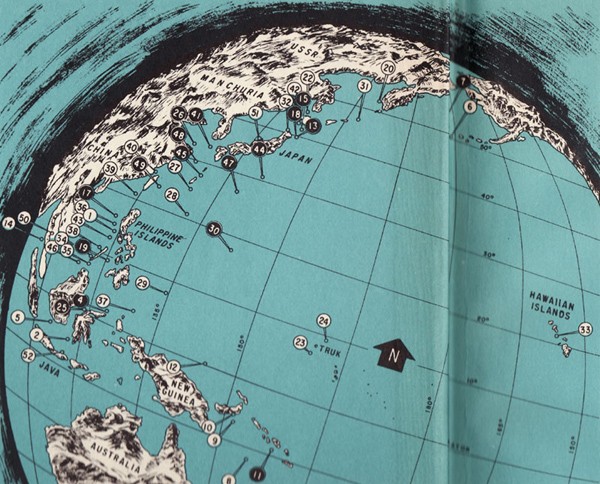
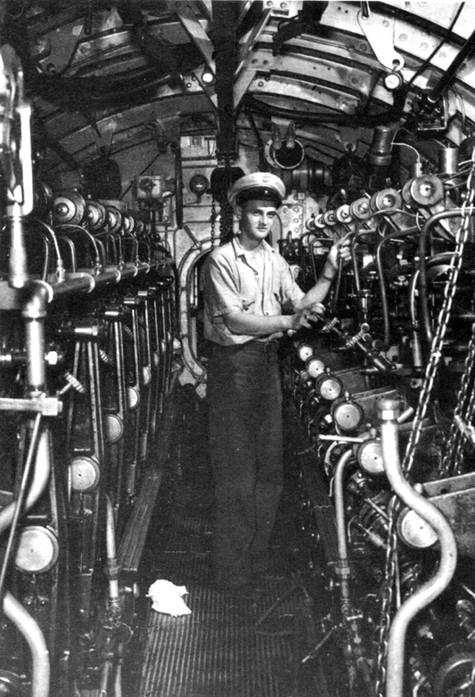
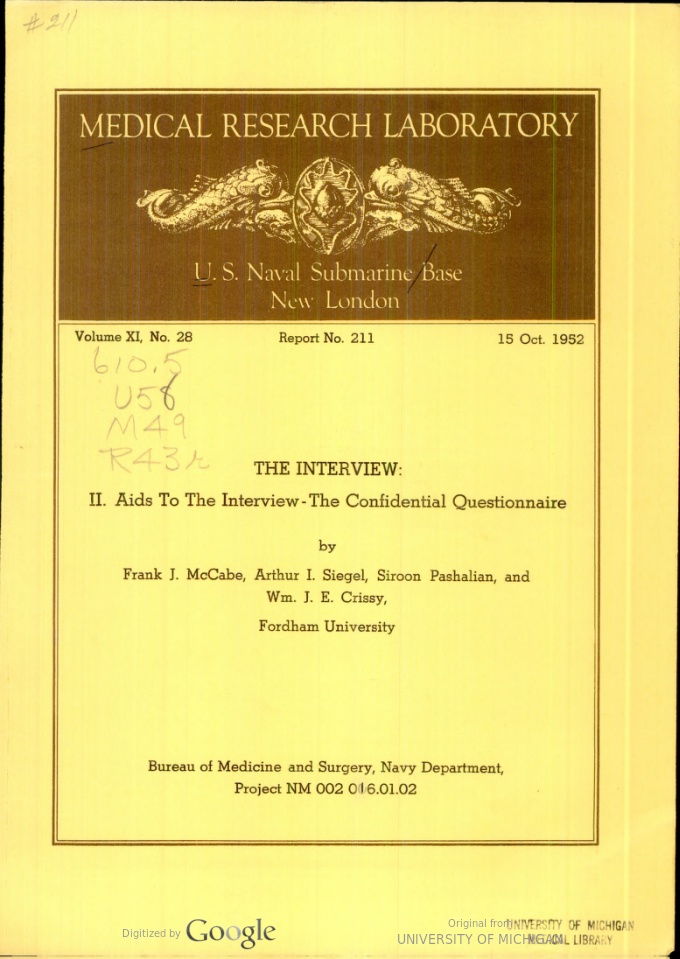
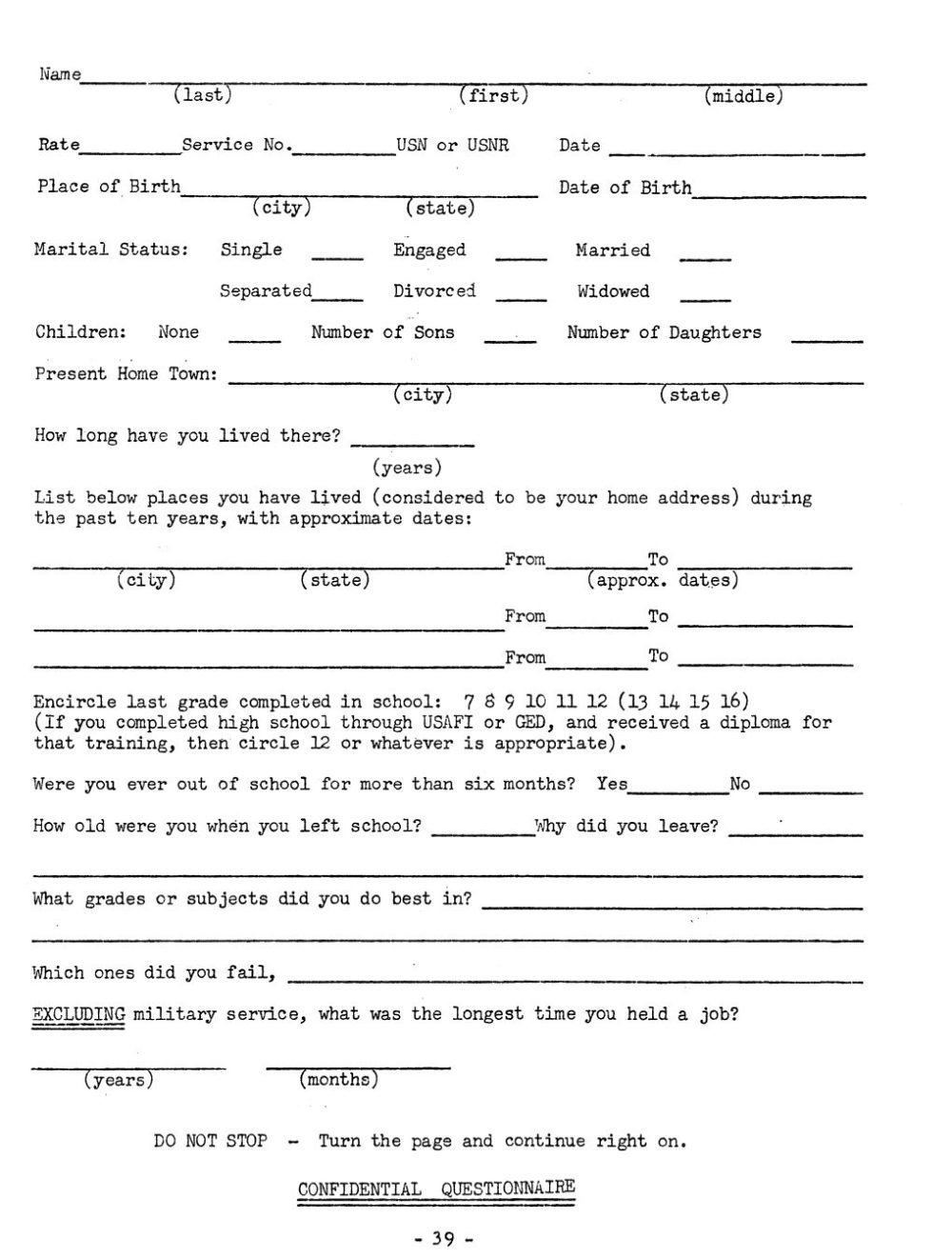
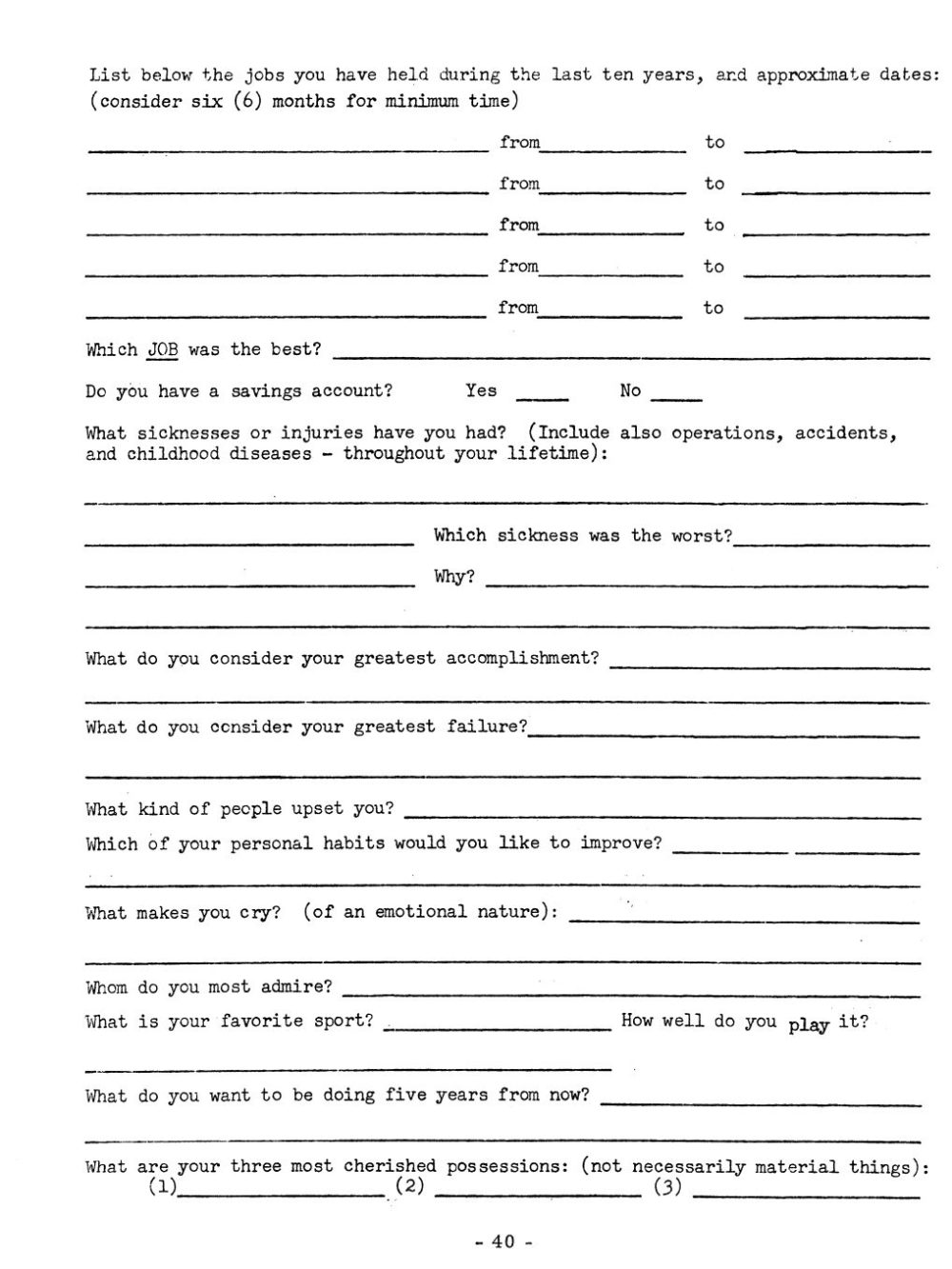
Reblogged this on DAVEBOOK and commented:
#DaveLovesSubmarines
I volenteered in boot camp in ’71.. do not remember that questioneer above, do not remember any phyical testing other then with everyone else in boot, … do remember filling out a form listing schools, all family, friends and references… (heard from many that the Navy knocked on thier door and interviewed them too).. remember seeing the shrink.. interviews, writen tests, and a background investagation.. ended up doing 8 years.. TM2(SS)
Hi Gary. I went in summer of 72. The questionnaire was first introduced in 1951 which was slightly before my birth. Not sure when they changed everything
Mister Mac
Hi Gary. I went in summer of 72. The questionnaire was first introduced in 1951 which was slightly before my birth. Not sure when they changed everything
Mister Mac
Summer 1972, volunteered first week, spent 13years, SR, SA, TM3SS, TM2SS, MT1SS….
I bought a book on Submarines when I was in 4th grade (about 1959) and decided that was what I wanted to do in life. Joined the Navy Reserves in 12th grade (with my parents approval as I was 17 at the time) and was sent directly to Sub School about a week after I graduated from high school so I never went to boot camp. Earned my dolphins 09JUL68 and left the service at the end of my enlistment as a TM2(SS).
I would have done anything to serve on board submarines. I got to SubScol in late 67 and qualified on board SSBN 656 in 1968. It was, and still is, one of my proudest moments when I earned the right to wear the Submarine Warfare Insignia, my silver dolphins.
Served 62-63 USS Torsk SS 423 QM Striker and 63 to 65 USS Holland AS-32 BM
In 1978 I went to Banta Street in Hackensack NJ which is a small building where all the recruiters worked. I went to see the Army to see if I could qualify for pilot training in helicopters. He was not there, so I met with the Navy. He told me about every boring job I could do on an aircraft carrier. I got up to leave. As I was leaving he mentioned that there was always submarines. It occurred to me that I had never met anyone who served on a boat. I sat back down, he pulled out a half gallon of Dewars. 8 days later I was at RTC Great Lakes and then to Sub school, Dam Neck for A and C school and off to New London.
BANTA STREET…There was a pool hall there…BANTA BILLIARDS…shady establishment, but cool. I lived in Hackensack 1960 & joined Navy in 1961. Found my way to USS Sea Robin and served for 4 years, leaving as ETN2(SS)
Was in Advanced Medicine School as a HM2, wanted to be a HM/DV! They sent a HM/SS and a HM/DV to the school a month before we were to fill out our “Dream Sheets”. HM/SS said that if we filled out for Sub School, we would “Get It”. HM/DV said that if we filled out for Dive School, we would “Get It”. Everyone that filled out for Sub School “Got It”, everyone that filled out for Dive School “Didn’t! Finally got to Dive School and served on Halibut for 3 years without “Qualifying”! Probably one of my biggest Career Mistakes!!!
I joined the Navy in 1971 and requested subs in Boot camp. Great Lakes for BE&E, Orlando FL for Torpedo school, Dam Neck Va. for Launcher school, New London for Sub school, RI for Damage control school. Got Patrick Henry SSNB599 Blue. Earned my dolphins on my third patrol. What a BLAST I had! Left the Navy in 1978 TMO2 SS (Shellback)
Volunteered Jan 1968 while stationed in San Diego. I remember the test and the interview with the Psychiatrist? He asked why I answered yes to both the agreement with pacificism and carrying out missile launch order? I said I love and hope for peace but will kill anyone seeking to kill us. USS Sea Robin SS407 Qualified 1969 TM3SS
In 1966 I never considered submarine service until in Boot Camp someone interviewed me and one of the questions was “do you want to volunteer for submarines?” I thought, WAIT, there’s that “V” word! He said I’d get $100 submarine pay bonus. That pretty much sold me. How bad could submarines be. Graduation came and sure enough, it’s off to Sub School. In Sub School I filled out a “dream sheet” for what kind of boat and duty station I would like. Well, since my home town was San Diego, I put down a WWII diesel boat out of San Diego. Yep, sure got what I wanted. New construction out of E.B. Groton on the USS Will Rogers (SSBN659). Oh, and they said if I wanted to reconnect with my then wife, I’d have to pay her transportation from San Diego to Groton. I enjoyed 5 patrols in 4 years but decided to get out. BIG mistake on my part but didn’t know it at the time.
Thanks Ed. I did leave active duty after my first tour but later went back in and never looked back. In my case it was an incredibly smart move since a few years doing less than desirable jobs taught me humility and gave me the chance to shed some excess attitude and an Ex. The rest of my career was pretty great with a few exceptions but today when I looked at my savings account and noticed that they put another check in their, I was pretty happy. This is my 25th anniversary since retiring. Glad I made the trip.
Mac
Thanks Ed. I did leave active duty after my first tour but later went back in and never looked back. In my case it was an incredibly smart move since a few years doing less than desirable jobs taught me humility and gave me the chance to shed some excess attitude and an Ex. The rest of my career was pretty great with a few exceptions but today when I looked at my savings account and noticed that they put another check in their, I was pretty happy. This is my 25th anniversary since retiring. Glad I made the trip.
Mac
Volunteered in 68. Went for the psychiatric interview and the guy ahead of me was in there for about 15 minutes. So when I went in I figured oh hell here we go. He asked why go subs? I told him more money. He said volunteer for combat and you’ll make even more so I ask him what are the chances of getting shot on a sub. He looked at me and said I see you’re married what does your wife think I told him I wasn’t planning on taking her along. Again he looked at me then the ceiling and ask do you feel confined in small spaces I said no he said get the hell out of here. Total interview time 2 minutes. Went sub school then to the bobbing Robin ss407
I served 1981 to 1987. I remember early on, a couple of times we were asked to fill out paperwork VAGUELY like this, or were interviewed under some other pretext. I remember asking around and it was always the sub volunteers (plus a few other top performers from the school) that had experienced it, not everyone. And I remember saying to my friends, “we’ve just undergone another screening for the sub service.” Most didn’t believe me. But mixed in with the innocuous, both the paperwork and the interviews were seeking some information that would be mighty odd… unless they were probing for some desirable/undesirable personality traits.
I’m quite sure that the evaluations didn’t diminish. They were improved, and they were disguised, to attempt to get more genuine responses, not what the sailor thought they wanted to hear.